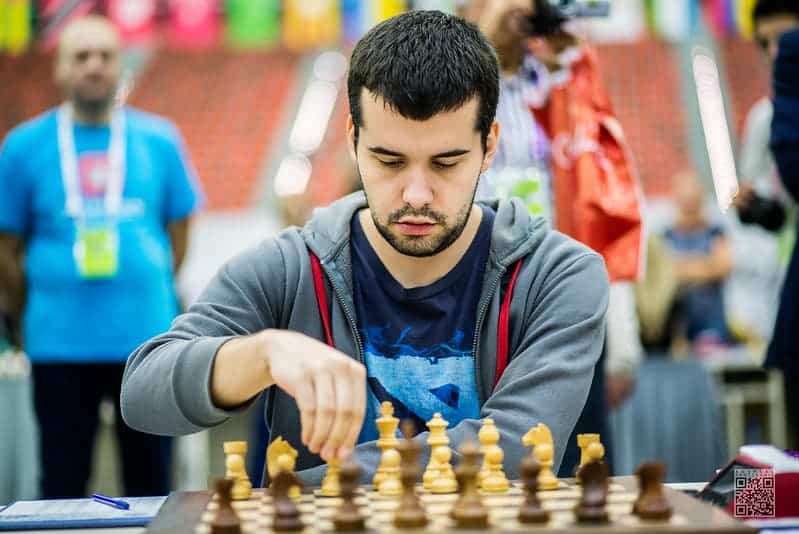Ian Nepomniachtchi, a Russian chess grandmaster ranked 4th in the world, is rarely unprepared. He’s fast, his calculation is on point, and his understanding of openings and theory is thorough. Nepomniachtchi recently won the FIDE Candidates Tournament in Yekaterinburg, which officially makes him the challenger for the world chess title.

The competition was fierce. Getting an edge against players of a top caliber is extremely difficult, and any small detail can make all the difference. At such a high level, players focus a great deal of their energy on openings. Chess openings branch out immensely after only a few moves but after about a century of theoretical advancements, the main lines in chess openings are well known by top players.
But this doesn’t mean new variations can’t be explored. In particular, the use of chess AIs (such as AlphaZero) has offered an injection of new ideas, as well as new tools to study chess openings.
Computers are already much more powerful than humans in chess. They’re so much better that top players use them to train — not by playing against them, but by having them analyze various opening lines and find new ideas. Using powerful software (like the AI engines developed recently) is important for this task, but powerful hardware also helps. To aid his preparation for the Candidates Tournament, Nepomniachtchi turned to the Skoltech Center for Data-Intensive Science and Engineering (CDISE).
CDISE agreed to help Nepomniachtchi. They offered a supercomputer cluster that allowed the chess player and his team to evaluate tens of millions of positions per second while training for the tournament. Ian’s team had 24/7 access to these resources and used them during preparation for the games.
“Chess tournament preparation these days is very dependent on software. Skoltech provided the full range of computational power for me and my team. I’d also like to personally thank Yuri Shkandybin, who set up and supported this work,” Nepomniachtchi said.
Shkandybin, the Zhores System Architect, also enjoys playing chess, although he doesn’t consider himself a good player. But working with Nepomniachtchi and his team offered an opportunity to put together his enjoyment of chess and his work as a supercomputer system architect.
“Personally I was interested in applying my knowledge in a new field. To do what either no one or only a few can do all over the world,” Shkandybin explains for ZME Science.
“It is always interesting to work with professionals in their field. Ian Nepomniachtchi’s team is very focused and they work constantly and scrupulously.”
CDISE researchers and Nepomniachtchi’s team worked together to adapt several existing chess engines for a supercomputer cluster. They worked with an open-source AI called LeelaZero, built on the architecture of AlphaZero. The supercomputer proved up to the task, although it’s a relatively small cluster, and only a small part of the cluster was used. The whole project lasted about a year, Shkandybin tells ZME Science.
“Around the world supercomputers, Zhores is a pretty small cluster, it ranks 8th in the Russian TOP 50. Zhores was built as a specialized solution for a wide range of scientific problems but we mainly specialize in AI and machine learning tasks.”
Zhores is normally used for scientific projects, from medicinal chemistry to modelling the behavior of sea turtles but in this case, it may have helped set up the world championship match in chess. Of course, if Nepomniachtchi wants to become world champion, he still has to defeat Magnus Carlsen, who has been on top of the chess world for some 10 years and is considered to be one of the best players in history. Carlsen has previously mentioned that one of his heroes is AlphaZero, a Google DeepMind neural network specializing in chess.
It’s unclear how Nepomniachtchi and Carlsen are training for this match. After all, chess players go to great lengths to hide their preparation for such matches, since every detail can make a big difference. But already, training with chess engines featuring AI has become the norm.


